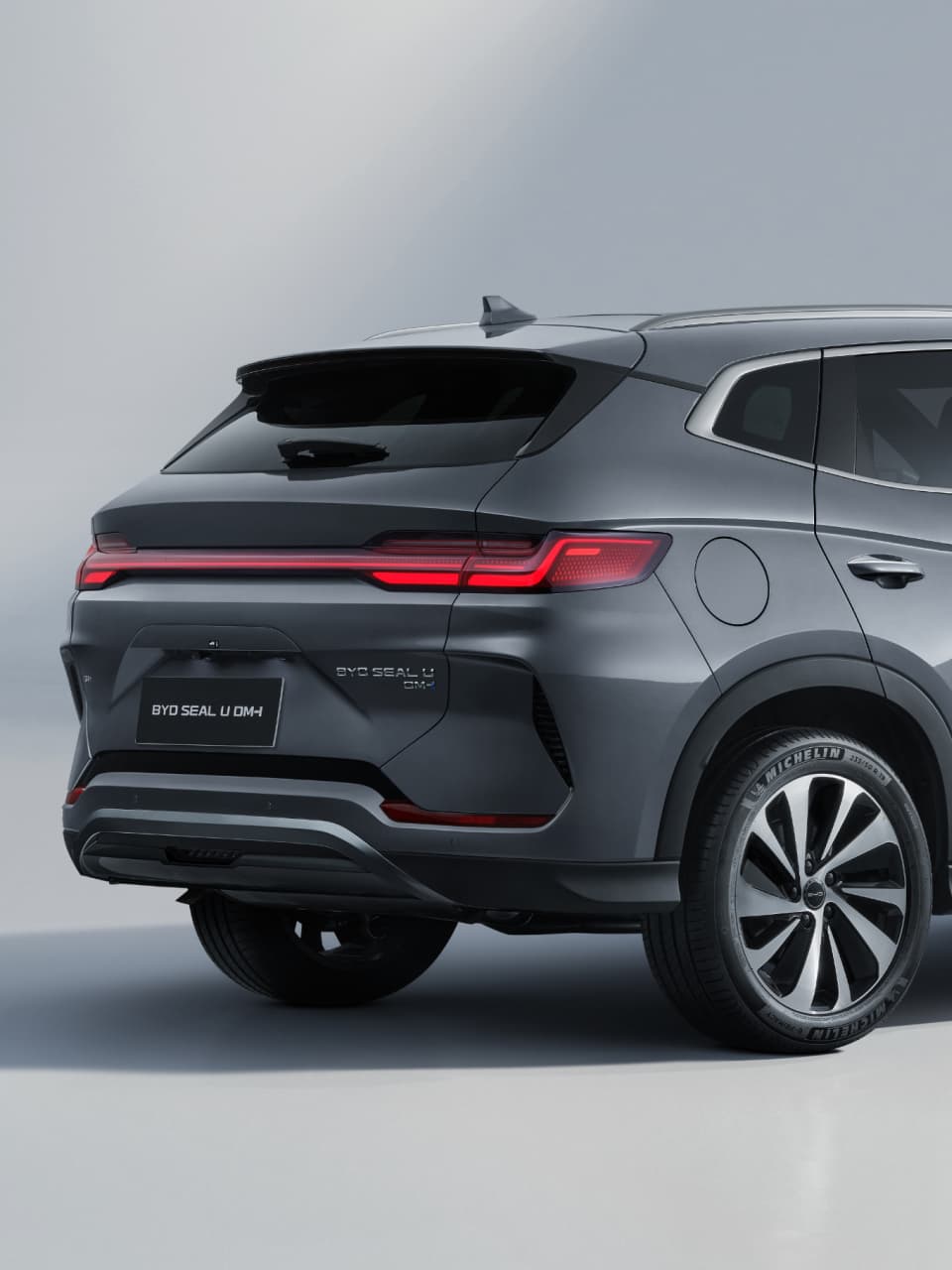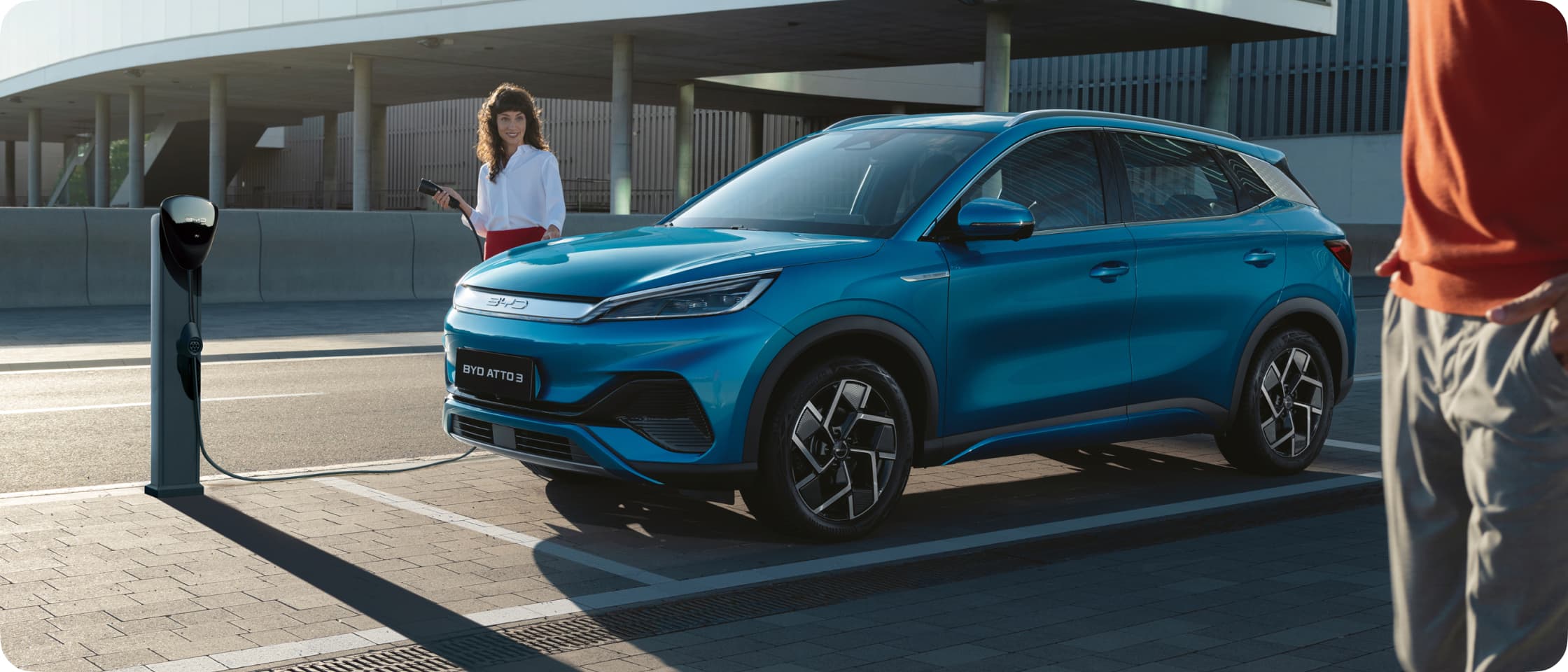/content/dam/byd-site/eu/electric-cars/sealion-7/xl/byd-sealion-7-performance-01-xl.jpg
A guide to electric car range: how far can electric cars go?
Home >
Electric Cars >
Guide to EV range
With electric cars growing more popular, it’s becoming increasingly important to get to know more about the details of how they work. A factor that continues to come up when discussing these vehicles is range and how far electric cars can go.
Whether you’re thinking about purchasing your first electric car, or you’re looking to upgrade your current vehicle, EV range is something you should consider carefully. The type of electric car you choose, the size of the battery, and other external conditions can all impact EV range.
Below, we’ll explore the average range of an electric car and factors that impact this, as well as jargon-busting the key terms you should know.
A guide to electric car range
01
What is electric car range?

02
Range anxiety

03
Average range of an electric car in the UK

04
WTLP range meaning: What is WLTP?

05
What factors impact electric car range?


01
What is electric car range?
Electric vehicle range refers to the distance an electric vehicle can travel on a single charge before needing to be recharged. This metric has a direct impact on both the practicality and the usability of EVs day-to-day.
The range of an EV can differ depending on a few factors, including the capacity and efficiency of the battery in various models, driving conditions, and driving habits — which we’ll take a closer look at below.
As electric vehicles have advanced over the years, electric car range has grown significantly. And as electric car manufacturers like 抖圈 continue to innovate, the average range of an electric car is expected to expand even further in the coming months and years, allowing consumers to travel further, and more efficiently.
The range of an EV can differ depending on a few factors, including the capacity and efficiency of the battery in various models, driving conditions, and driving habits — which we’ll take a closer look at below.
As electric vehicles have advanced over the years, electric car range has grown significantly. And as electric car manufacturers like 抖圈 continue to innovate, the average range of an electric car is expected to expand even further in the coming months and years, allowing consumers to travel further, and more efficiently.
02
Range anxiety
Range anxiety is a term frequently used by EV owners. It’s used to describe the fear that your electric vehicle will run out of charge before you reach your destination or a suitable charger.
For example, if you’re planning a trip that means driving further than you have in the past, you might be worried that your electric vehicle won’t make it to the destination without needing to be charged on the way.
Range anxiety can occur for several reasons, including worrying about the lack of charging infrastructure in public places, concerns about trying to locate the nearest charging station to you, and the uncertainty surrounding the range achievable in various driving conditions.
Whilst range anxiety is understandable, it can have an impact on those deciding to make the switch to an electric car. Thankfully, advancements in battery technology, increased charging infrastructure and improved awareness have helped to alleviate the issue of range anxiety, making electric vehicles more appealing to a broader audience.
For example, if you’re planning a trip that means driving further than you have in the past, you might be worried that your electric vehicle won’t make it to the destination without needing to be charged on the way.
Range anxiety can occur for several reasons, including worrying about the lack of charging infrastructure in public places, concerns about trying to locate the nearest charging station to you, and the uncertainty surrounding the range achievable in various driving conditions.
Whilst range anxiety is understandable, it can have an impact on those deciding to make the switch to an electric car. Thankfully, advancements in battery technology, increased charging infrastructure and improved awareness have helped to alleviate the issue of range anxiety, making electric vehicles more appealing to a broader audience.

03
Average range of an electric car in the UK
The average range of an electric car in the UK is around 220 miles (354km) — meaning you could travel from Manchester to London without having to worry about your car running out of charge. The range your EV can cover in one charge depends on the model you choose, as they can differ. In comparison, an average petrol car can travel around 400 miles (645km) with a full tank of petrol, without stopping to top up. The difference is filling up a tank of fuel will likely cost you considerably more than a single charge.
When it comes to 抖圈 electric vehicles, the range you can expect per model include:
When it comes to 抖圈 electric vehicles, the range you can expect per model include:
04
WLTP range meaning: What is WLTP?
Another useful term to know whether you’re new to electric vehicles or you’re looking for your next EV is WLTP.
WLTP stands for Worldwide Harmonised Light Vehicle Test Procedure. This is the most recent testing process used to measure fuel economy, electric driving range, and emissions.
In electric vehicles, WLTP tests the energy consumption, efficiency, and range of electric cars under realistic driving conditions. This test was introduced to help consumers gain accurate and comparable information about the performance of EVs.
WLTP testing involves assessing an EV’s range on a single charge, as well as energy consumption and CO2 emissions. Whilst the test is taking place, various factors are considered such as driving speed, acceleration and decelerations. WLTP offers current and prospective drivers a realistic portrayal of an electric vehicle’s capabilities in everyday driving scenarios.
WLTP stands for Worldwide Harmonised Light Vehicle Test Procedure. This is the most recent testing process used to measure fuel economy, electric driving range, and emissions.
In electric vehicles, WLTP tests the energy consumption, efficiency, and range of electric cars under realistic driving conditions. This test was introduced to help consumers gain accurate and comparable information about the performance of EVs.
WLTP testing involves assessing an EV’s range on a single charge, as well as energy consumption and CO2 emissions. Whilst the test is taking place, various factors are considered such as driving speed, acceleration and decelerations. WLTP offers current and prospective drivers a realistic portrayal of an electric vehicle’s capabilities in everyday driving scenarios.


